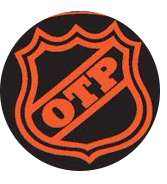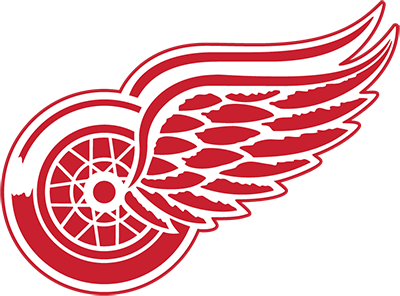I was lucky during my playing days. I never played on a Stanley Cup team. However, I played on a winning hockey team throughout my career. The Flyers made the playoffs every season of my career. So did the Dallas Stars in my brief time with them in 2004.
We expected to win. The Flyers teams I played for reached at least the Eastern Conference Final four times. We went to the Stanley Cup Final once (1997). In my decade with the Flyers, we won at least one playoff round in five postseasons. I never had the good fortune to lift the sport’s championship trophy but we were perennial contenders.
Something I realized over the years: It takes good design to build a contender. It takes excellent design plus good luck to build a champion. Next week, I plan to write a blog about just how hard it is to win the Stanley Cup. Even repeat champions like the Florida Panthers need some breaks along the way.
This week, however, I want to focus on the elements that all winning teams have in common. It applies to contenders and champions alike. The difference is that a contender may lack at least one of these traits. Champions tend to have all five.
Winning Team Trait 1: Five man units in synch
Find me a team that lives mainly off its power play. I’ll show you a team who’s offensive goes AWOL at some critical point. Strong five-on-five teams are contending teams. Champions do a consistently stellar job in taking away time and space from opponents at five-on-five.
Forwards backcheck willingly. Defensemen get puks efficiently up to the forwards, and also pick their spots wisely in joining the attack. The forecheck is aggressive but not reckless.
Do these things and you’ll have the puck a lot more than you need to defend. When forced to play in their own zone, winning teams push the opponents to the perimeter.
Winning Team Trait 2: Success on both sides of special teams
Ken Hitchcock didn’t invent the “special teams index”. I don’t know who did, but Hitch was a big believer in it. So was the late EJ McGuire, who was an assistant coach under Bill Barber with the Flyers. More famously, “Edge” was Mike Keenan’s right-hand man in Philly and Chicago.
In case you don’t know what the special teams index is, it’s really easy to figure out. It’s a team’s power play success rate plus the penalty kill success rate. Hitchcock always said a team a special teams number of 100 or higher is in good shape. For example, an 80 percent PK rate plus a 20 percent power play.
Personally, I’ve never been a big stats guy. Nevertheless, I totally agree with what Edge and Hitch wanted to stress: if you have both a good power play and a good penalty kill, you’re probably a contender.
Nowadays, I think the special teams target number is more like 105. In other words, a 25 percent or higher success rate on the power play plus a PK in the 80s.
Here’s the thing: there are going to be portions of any season where the power play in particular goes cold for a little while. There will be games where the PK yields a couple goals. It’s not too often, even for top teams, that both sides of special teams click at the same time for weeks on end. Sometimes, one has to balance out the other.
Winning Team Trait 3: Clutch Goaltending
Goaltending success really isn’t about goals against averages and save percentages. It’s about the timeliness and quality of the saves. Why did the Oilers fall just short of the Stanley Cup in 2024 and 2025? Their penalty kill and goaltending — which feed into one another, of course — simply weren’t good enough.
What does stellar goaltending do for a team? It gives them confidence. It creates fearlessness to make plays. When a goalie bails out his team, the skaters in front work harder to return the favor as needed. They’ll lay out to block shots as needed. Moreso, they won’t make well-meaning mistakes like accidentally screening their goalie.
Bottom line: team defense and goaltending walk hand in hand. They’ll either lift up each other or they’ll eventually drag down the other.
Trait 4: Contributions from all around the lineup
Want to see a true contender? Don’t just look at the stars on the top line or the No. 1 defenseman. Look at the top-nine up front. Look what special areas the fourth line brings. Same thing on D. Are there three steady pairings? What does the middle pair in particular bring: Do they reliably provide 18 to 20 minutes of solid hockey?
I’ll use the Flyers teams I played on as the example. Yes, our focal players were the Legion of Doom and Rod Brind’Amour (or, later, Keith Primeau) up front and Eric Desjardins on D. But it was the guys who made us deeper than other teams — players like Petr Svoboda, Joel Otto, and Shjon Podein — that made us just a little better than the teams that got shut down early in the playoffs.
Trait 5: Veteran leadership
Last week’s blog was all about locker room and on-ice leadership. That’s an essential aspect of any winning team.
As a broadcaster for the Flyers, I saw a perfect example in 2019-20 of what strong leadership does for a team. That year, the additions of Matt Niskanen and Justin Braun paid off not only on the ice but in terms of the team’s mental approach.
I loved something Niskanen said that year about winning streaks: The key to extending a winning streak is to focus on playing a little better than you did in the previous game. When there is adversity, use that same mentality to pull through it and start winning again.
There WILL be adversity again as winter turns to spring and the playoffs draw near. Keep that same mental approach and it will serve the team well. It takes a few veteran leaders to show the way in that regard.
Bonus Key Trait: Smart Coaching
Coaches have to know when to crack the whip and when to lay off a bit. To me, Cup-winning coaches such as Craig Berube and Mike Sullivan command respect by understanding how to strike that delicate balance. They don’t have many rules or non-negotiables BUT their players had better get on board with the few absolutes that are in place. I think Rick Tocchet will instill something similar in Philadelphia in the long run.
One Thing Leads to Another
We got a huge response to last week’s leadership blog. As I said last week, the blog topic was inspired by a story on the local news. A roofer named Matt Leader was on a job in Philadelphia. He saw smoke from a neighboring house, and quickly realized the house was on fire. Matt and his client ended up rescuing the occupants. Everyone is fine.
It’s funny sometimes where things lead in life. It turns out that Matt’s company, Cover All Exteriors LLC, is affiliated with a firm that does a lot of work for the Flyers Alumni Association. I just thought it was a cool story with a guy named “Leader” showing life-saving leadership under pressure.
At any rate, it’s funny how one thing leads to another. I’m proud to announce that Cover All Exteriors will now power three separate areas of Hockey Hot Stove: my Therien’s Take blogs, the Off the Post podcast (Mike Augello, Russ Cohen and Anthony Mingioni) and Bill Meltzer’s Flyers blogs.
Snow the Goalie: Flyers Offseason to Date
Anthony SanFilippo, Russ Joy and I recorded the latest episode of the Snow the Goalie podcast on Thursday. Watch below.





Agreed. Goaltending is a must to win a Cup aka Bernie in goal for the Flyers two cup successes. Ensure your primary scoring unit is not stymied by a specific defensive mode aka left wing lock or trap in the Stanley Cup final series. Make sure the team has enough depth to get you through a long playoff run.
Look at the ages on that Florida roster. Bob is the only core guy over 30. Their window is wide open.
https://www.espn.com/nhl/team/roster/_/name/fla/florida-panthers